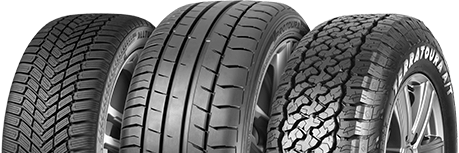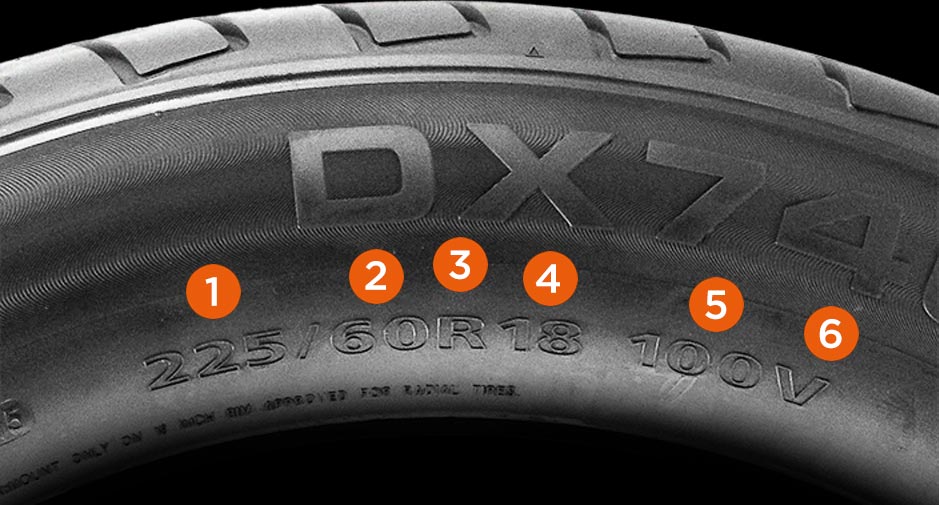
UNDERSTANDING TYRE PRESSURES
Wednesday 29th May 2024Over the course of a year, tyres will naturally lose air, so it’s important to check your tyre pressure regularly. Keeping your tyres at optimum pressure reduces the risk of loss of control and protects from premature wear and damage. Tyre pressure can drop due to small perforations, the natural escape of air over time or even a decrease in ambient temperature.
Keeping tyres in good condition and at the right pressure is essential for safe driving. Here, we take a look into the importance of checking tyre pressure regularly, why overinflated or underinflated tyres can be problematic and the importance of carefully adjusting tyre pressure in line with the weight of your vehicle.
Managing your tyre pressure:

Tyre pressure is measured in pounds per square inch (PSI) and every vehicle has its own level which should be adhered to when carrying a standard load. However, if you are increasing your load, it is recommended you increase the pressure in your tyres to ensure the weight of your vehicle is supported, as well as providing more stability and enhancing fuel efficiency.
Heavy loads usually require you to inflate your tyres just above their normal pressure, but these specific pressures can be found in your vehicle handbook. It’s important to remember that once the weight of your vehicle returns to normal and you’re no longer carrying the additional weight, you must reduce the pressures accordingly.
Driving with the incorrect tyre pressures come with risks and it’s important to adhere to your vehicles specific pressures to avoid the followin
- Overinflation – this can lead to premature wear of the tread, and in some cases, it can even cause a blowout, especially whilst traveling at speed. If your tyres are overinflated, you may find them to be extremely stiff. Overinflated tyres can also distort the shape of the tyre, leading to decreased traction and increased wear in the centre of the tyre.
- Underinflation – this can also lead to premature tyre wear, the reduction of steering precision, cornering stability and increased rolling distance. Underinflated tyres are easier to identify than over-inflated ones as they will feel and look soft. This in turn will cause excessive wear towards the edge of the tread.
How to check your tyre pressure:

Firstly, you’ll need to know the correct tyre pressure for your vehicle – this will be detailed in the vehicle handbook, on a label inside the driver’s door or inside the fuel cap.
You can use tyre pressure gauges provided at a petrol station to check your tyre pressure; you can also buy portable compressors so pressure can be checked on the go.
Once at the tyre pressure gauge station, simply remove the dust cap from the tyre valve and place the pressure gauge onto the tyre valve stem – this will project your tyres’ current reading.
When the PSI reading is displayed on the station screen, compare it to the recommended pressure for your vehicle. From here, you will be able to determine whether you need to increase or decrease the air in your tyres.
Key things to remember:
- It is important to inspect your car’s tyre pressure regularly, we’d suggest at least once per month. You should check tyre pressure before and after a long journey, as well as after any sudden temperature changes. The cold weather in particular can cause tyre pressures to drop.
- Make sure you check your tyres when they are cold, allowing three to four hours to pass after driving your vehicle to ensure you get the most accurate reading.
- Tyre pressure checks are especially important during the winter months as this will help maintain good traction and handling on slippery icy roads.
- If your car was made after 2014, your vehicle should be equipped with a TPMS (Tyre Pressure Monitoring System) that will warn you when your tyres are under-inflated. However, you should not wait for this indicator to show before you check your tyre pressures manually.
If you’re proactive, you’ll stop issues before they occur and maximise the life span of your tyres, keeping you safe and saving further costs down the line, too. For more information on tyre maintenance checks click here or contact your local Davanti dealer.









